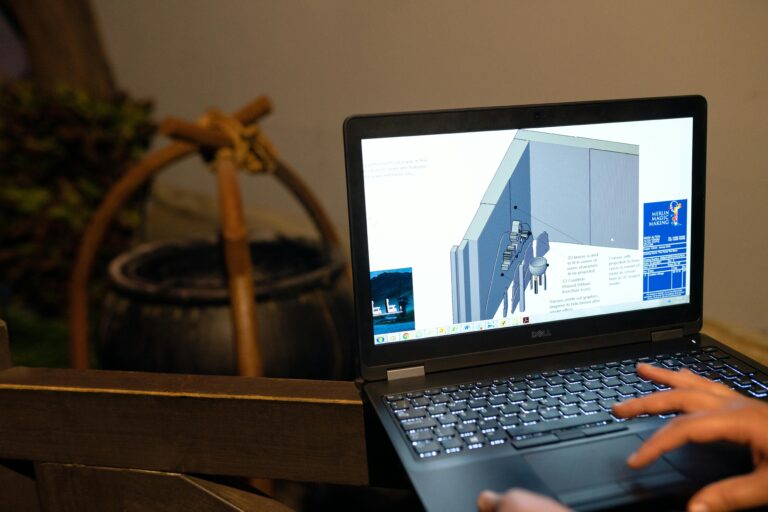BCI technology enables direct communication between the brain and external devices, transforming how humans interact with machines. Advances in neuroscience, artificial intelligence, and biomedical engineering now make interpreting brain signals more accurate and practical.
This technology matters now more than ever, as millions worldwide face neurological disorders requiring innovative solutions—like stroke rehabilitation and mobility restoration. Researchers, engineers, and clinicians actively develop BCI systems to address these urgent needs. Moreover, companies and startups invest heavily in BCI technology, recognizing its potential across medicine, gaming, education, and human-computer interaction.
How BCI Technology Works
BCI technology reads brain activity by picking up electrical signals or changes in blood flow caused by brain cells. Then, systems analyze these signals to understand what the brain is doing.
There are two main types of BCIs. Invasive BCIs put devices inside the brain. This method gives very accurate readings but comes with medical risks. Non-invasive BCIs use sensors placed on the head. They are safer but less precise.
Some common tools include EEG, which records electrical brain activity using sensors on the scalp. fNIRS measures blood oxygen levels in the brain with light sensors. Some systems use electromagnetic waves to send or measure brain signals.
BCI technology still faces challenges. These include less accurate signals, delays in processing data, and difficulty telling real brain signals from background noise. These problems affect how well the system works and how easy it is to use.This is supported by a study published on mmrjournal.biomedcentral.com in March 2025 ,which discusses recent applications of EEG-based BCI in the rehabilitation of patients with neurological disorders.
Types of BCI Technology
BCI technology enables direct communication between the brain and external devices through various methods. The first type, invasive BCIs, involves implanting electrodes directly into the brain. This method provides high accuracy and detailed neural data but carries significant medical risks such as infections and tissue damage. Therefore, invasive BCIs suit clinical applications requiring precise control, like assisting patients with severe motor disabilities.
In contrast, non-invasive BCIs use external sensors, such as EEG headsets like Emotive. These devices pose minimal health risks and are easier to use but offer lower signal quality and accuracy due to interference from the skull and scalp. Non-invasive BCIs find broader applications in gaming, education, and general research, where safety and ease of use are priorities.
Partially invasive BCIs represent a middle ground. They implant electrodes in areas close to the brain but avoid penetrating brain tissue deeply. Companies like Precision Neuroscience develop such devices to balance accuracy and safety, aiming for broader therapeutic and commercial use.
Overall, each BCI type serves different needs based on trade-offs between precision, risk, and usability. Researchers, developers, and users must choose the appropriate technology depending on the specific application and constraints.
Real-World Applications of BCIs Today
BCI technology is already transforming several fields by enabling direct communication between the brain and external devices. In medicine, it plays a crucial role in treating paralysis, supporting rehabilitation after strokes, and improving sensory functions such as hearing and vision. These advances offer new hope to patients with neurological disorders and physical impairments by restoring lost abilities and enhancing quality of life. For example, implanting electrodes in the brain has enabled paralyzed patients to speak at speeds of up to 78 words per minute, which approaches the pace of natural conversation.
In education, BCI technology helps enhance cognitive functions and mental focus. Researchers and educators are exploring its potential to personalize learning experiences and boost brain performance. This opens opportunities for students and professionals aiming to improve their mental capabilities through neurofeedback and brain training. A study published in Frontiers in Human Neuroscience (2024):Researchers used a passive BCI system based on EEG signals to adjust the pace of information presentation during a learning task focused on memorizing constellations. The system dynamically adapted to the learner’s cognitive load, offering a personalized learning experience.
The gaming industry also benefits from BCI technology, integrating it into virtual reality (VR) and augmented reality (AR) to create immersive, hands-free experiences. This integration allows users to control games using brain signals, providing a more natural and intuitive interface. These advancements attract significant investment, driving innovation and commercial growth in the BCI sector.
Overall, these real-world applications demonstrate the broad impact of BCI technology across healthcare, education, entertainment, and accessibility, making it a vital area for ongoing development and investment.
Finally, BCI technology enables hands-free computing by allowing users to operate devices without physical interaction. This application is especially valuable for individuals with limited mobility and for professionals seeking more efficient ways to control computers or smart devices. Ensuring data security and privacy remains critical as BCI devices handle sensitive brain data.
Ethical and Privacy Considerations
Brain-Computer Interfaces (BCIs) can read brain signals and translate thoughts into commands. This capability raises critical ethical questions. First, allowing systems to access your thoughts means sharing highly personal data. It challenges our traditional understanding of privacy.
Moreover, the potential risks are serious. Unauthorized parties could manipulate or track users’ thoughts, threatening individual freedom. Such breaches could happen through hacking or misuse by neurotech companies. These risks emphasize the need to protect sensitive information actively.
Therefore, ethical standards and privacy laws must keep pace with BCI development. Clear regulations can prevent abuse and guide responsible innovation. They should ensure users control their data and consent explicitly.
In addition, developers and neurotech companies must prioritize transparency. They must explain how data is collected, stored, and used. This builds trust and safeguards users’ rights.
Overall, ethical and privacy considerations are not optional but essential. Addressing them protects individuals and promotes the safe integration of BCI technologies into everyday life.
Join the conversation and share your views on the ethical and privacy considerations of BCI technology. Share your thoughts on our Reddit post to help others and the community
Challenges in BCI Development
Despite the growing interest in BCI technology, several challenges continue to limit its widespread adoption. First, decoding complex neural signals remains a major hurdle. The human brain produces noisy, overlapping patterns that vary between individuals and over time. Accurately interpreting these signals in real time requires advanced algorithms and precise calibration, which are still evolving.
Second, hardware limitations present significant obstacles. Current BCI devices often struggle with power efficiency, size, and wireless communication. Wearable or implantable systems must operate reliably without frequent charging, bulky components, or unstable connections. Balancing performance with user comfort is a constant engineering challenge.
Finally, moving from research prototypes to commercially viable products is difficult. Many innovations work well in controlled lab environments but fail under real-world conditions. Regulatory approval, manufacturing scalability, and user adoption add further layers of complexity. Startups and established companies alike must bridge the gap between proof-of-concept and product-market fit.
In short, while BCI technology holds immense promise, solving these technical and practical issues is essential for real-world success. Researchers, developers, and investors must collaborate closely to bring robust, accessible solutions to market.
The Role of Artificial Intelligence in BCI
Artificial Intelligence (AI) plays a critical role in advancing BCI technology by making brain signal interpretation faster and more accurate. Machine learning algorithms—especially deep learning models—can identify complex neural patterns that traditional methods often miss. This has led to more responsive and adaptive brain-computer systems.
For instance, convolutional neural networks (CNNs) and recurrent neural networks (RNNs) have shown strong results in analyzing EEG signals. These models learn directly from raw brain data, improving classification accuracy in tasks like motor imagery or emotion detection. In EMG-based systems, support vector machines (SVMs) and decision trees are often used to decode muscle signals efficiently. There is a study conducted in 2025 that is among the latest research on using convolutional neural networks (CNNs) and recurrent neural networks (RNNs) for analyzing EEG signals and improving classification accuracy in tasks like motor imagery and emotion detection.
Moreover, AI enables the development of neuro-adaptive interfaces—systems that adjust themselves based on the user’s cognitive state. This allows smoother interaction in real time, especially in dynamic environments like virtual reality or assistive robotics.
As this field grows, so does the demand for skilled professionals. There’s an increasing interest in brain machine interface jobs, attracting researchers, software engineers, and neuroscientists. For startups and academic labs, integrating AI into BCI design is no longer optional—it’s essential for performance, personalization, and real-world impact.
Top BCI Startups Leading the Revolution (2025)
With the advancement of BCI technology, a number of startups have emerged to develop brain-computer interface solutions. These companies are transforming the healthcare field, and here are some of the top companies leading the way in 2025.
-
Blackrock Neurotech develops advanced neural implants used in clinical and research settings to restore motor and sensory functions.
-
Neuracle focuses on non-invasive BCI solutions for real-time brain signal monitoring and neurofeedback applications.
-
Emotiv offers affordable, non-invasive EEG headsets widely used in gaming, research, and cognitive training.
-
Synchron pioneers minimally invasive neural interfaces that enable brain-computer communication with reduced surgical risks.
-
BrainCo designs BCI devices aimed at enhancing cognitive performance and attention, especially in educational settings.
-
Paradromics builds high-bandwidth invasive BCIs to restore communication abilities for patients with severe neurological disorders.
-
Neuralink develops high-channel-count brain implants to link the human brain with computers, targeting neurological treatments and cognitive enhancement.
-
Precision Neuroscience manufactures partially invasive BCI systems designed for seamless human-machine interaction.
-
Kernel creates wearable devices that monitor brain activity to improve brain health and treatment outcomes.
-
Cognixion produces AI-powered communication aids for individuals with speech and motor impairments.
The landscape of neurotech companies is constantly evolving. While these are some of the top players in 2025, their rankings may shift over time as new innovations emerge and other major companies enter the BCI space. The absence of certain well-known firms from this list does not diminish their impact or potential in advancing brain-computer interface technology. This dynamic field promises exciting developments ahead, reshaping how humans interact with technology and improving lives worldwide.
BCIs and Human Enhancement: Hype or Reality?
Brain-computer interface (BCI) technology is advancing rapidly, but public perception often lags or leaps ahead of reality. While media narratives sometimes portray BCIs as tools for mind-reading or instant cognitive upgrades, the scientific landscape remains more grounded. Current research focuses primarily on therapeutic applications—restoring movement, communication, or sensory function—not boosting human abilities beyond natural limits. For example, some media platforms promote terms like telepathy, mind-controlled movement, and “sensory vision”, concepts typically drawn from science fiction and not reflective of the current scientific reality of BCI technology.
However, discussions around transhumanism have gained traction. This concept promotes using technology to enhance cognitive or physical abilities, potentially leading to a new phase of human evolution. Although BCIs are central to this vision, most of today’s systems lack the precision, speed, and integration required to support such ambitions.
From an ethical standpoint, the boundary between medical necessity and enhancement raises concerns. Enhancing memory, focus, or emotional control may seem desirable, but doing so without clear medical need introduces complex questions about fairness, access, and long-term effects on human identity.
Additionally, there’s a risk of diverting resources from clinically valuable solutions toward speculative enhancements. The line between innovation and hype remains thin.
BCI technology still operates within clear scientific constraints. Enhancements may become possible in the future, but for now, most real-world systems prioritize restoration over augmentation. Understanding this distinction is critical to maintaining both ethical integrity and scientific focus.
Conclusion: Rewiring the Future
BCI technology holds the power to transform everyday life by enabling seamless communication between the brain and external devices. Researchers, engineers, clinicians, and users already witness its impact on healthcare, gaming, and productivity.
As we move forward, this technology will become more integrated into our daily routines, enhancing human capabilities in ways previously unimaginable.
However, the future of BCI technology depends on responsible development and ethical use. All stakeholders—including scientists, developers, healthcare professionals, and investors—must collaborate to ensure it respects privacy and autonomy. Your awareness and active participation are essential to shape a future where BCI technology empowers humanity safely and effectively.
BCI Technology: Common Questions Answered
-
What are the main ethical concerns surrounding BCI technology?
Ethical concerns include privacy violations, potential misuse of brain data, informed consent, and the risk of manipulation or unauthorized control of users’ thoughts or actions. Developing clear regulations and standards is crucial to protect users.
-
How are BCIs used in gaming and virtual reality?
BCIs enable hands-free control of games and immersive VR experiences by translating brain signals into commands. This allows users to interact naturally without traditional controllers, enhancing accessibility and engagement.
-
What challenges do developers face when creating BCI devices?
Challenges include ensuring signal accuracy, minimizing latency, managing power consumption, creating comfortable and non-invasive designs, and overcoming difficulties in interpreting complex neural patterns.







